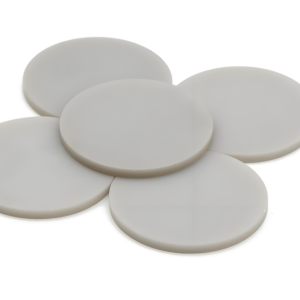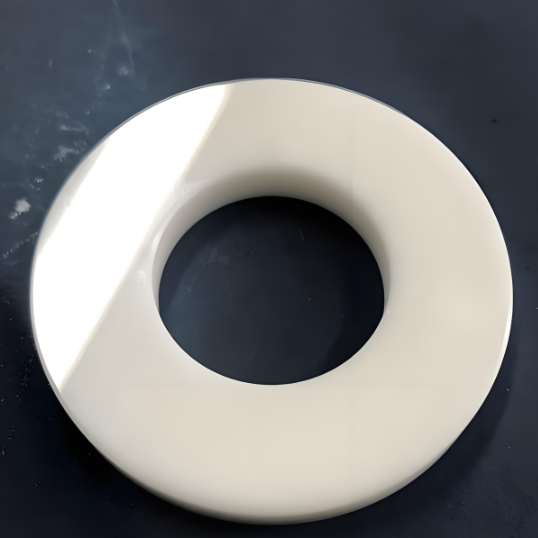Discover Premium Ceramic Products | Durability & Elegance United | Advanced Ceramics
PRODUCT PARAMETERS
Description
Overview of Aluminum Nitride Ceramic Rings
Aluminum Nitride (AlN) ceramic rings are specialized ceramic components that play a key role in a variety of high-performance applications using the unique properties of aluminum nitride. These ceramic rings are designed to meet stringent requirements in thermal management, electrical insulation, and mechanical stability. Here is an overview of aluminum nitride ceramic rings:
Features of aluminum nitride ceramic rings
1. High thermal conductivity: One of the outstanding features of aluminum nitride ceramic rings is its excellent thermal conductivity, which ranges from 170 to 220 W/m-K. This property makes it very effective in applications that require efficient heat dissipation.
2. Excellent electrical insulation: Despite its high thermal conductivity, AlN ceramic rings maintain excellent electrical insulation properties, making them ideal for electronic packaging and semiconductor applications that require high dielectric strength.
3. Low coefficient of thermal expansion (CTE): Aluminum nitride has a relatively low coefficient of thermal expansion, which is very close to that of silicon and other semiconductor materials. This minimizes thermal mismatch stresses and improves reliability in devices subject to temperature fluctuations.
4. Chemical stability: Aluminum nitride ceramic rings have excellent chemical resistance, including resistance to molten metals, acids and bases, ensuring durability even in corrosive environments.
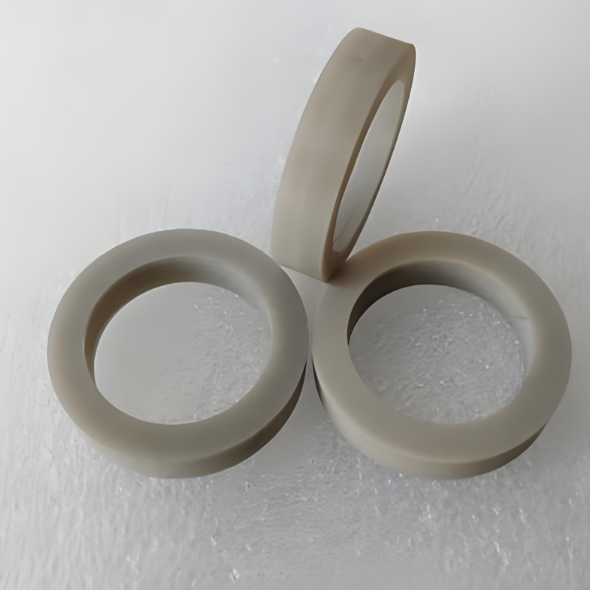
Specification of Aluminum Nitride Ceramic Ring:
| Property | Typical Specification |
| Material Composition | AlN (Aluminum Nitride) |
| Thermal Conductivity | 170-220 W/m·K |
| Coefficient of Thermal Expansion | ~4.5-5.0 ppm/°C (similar to silicon) |
| Dielectric Strength | >20 kV/mm |
| Dielectric Constant (1 MHz) | ~8.4 – 9.6 |
| Volume Resistivity | >10^14 Ω·cm at 25°C |
| Mechanical Strength (Bending) | ~350-450 MPa |
| Hardness (Vickers) | ~12-14 GPa |
| Density | ~3.26 g/cm³ |
| Porosity | <1% |
| Operating Temperature Range | -269°C to +1000°C |
| Chemical Stability | Excellent resistance to acids, alkalis, and molten metals |
| Surface Finish | Can be polished to optical quality or left with a machined finish |
| Inner Diameter (ID) | Customizable; typically ranges from a few millimeters to several centimeters |
| Outer Diameter (OD) | Customizable; typically ranges from a few millimeters to several centimeters |
| Thickness | Customizable; typically ranges from 0.5 mm to several millimeters |
| Purity | High purity options available (e.g., >99%) |
Applications of aluminum nitride ceramic rings:
Electronics and semiconductors
1. Heat sinks and thermal management: Aluminum nitride rings are used as heat sinks or thermal management elements in power modules, LEDs, laser diodes and RF devices. Their high thermal conductivity effectively dissipates heat away from sensitive components.
2. Insulating spacers: In electronic assemblies, aluminum nitride rings can be used as insulating spacers to achieve efficient thermal conduction between components while providing electrical isolation.
Substrates and mounting rings: Used as substrates or mounting rings for semiconductor devices to ensure proper thermal and electrical performance.
Automotive Industry
1. Sensor Components: AlN rings protect sensors in harsh environments such as exhaust systems, fuel lines, and engine compartments. They withstand high temperatures and corrosive conditions.
2. Ignition Systems: Used in ignition systems, they must withstand extreme temperatures and provide reliable electrical insulation.
3. High-Temperature Seals: Used as seals in high-temperature automotive components to maintain integrity under thermal stress.
Telecommunications
1. Microwave Devices: AlN rings are used in microwave devices such as filters and resonators due to their low dielectric loss and excellent thermal stability, which is critical for maintaining signal integrity at high frequencies.
2. Satellite Communication Systems: Used in satellite components because they are lightweight and can withstand extreme heat, helping to improve the reliability of space-based communication equipment.
Medical Devices
Implants and Diagnostic Devices: Because AlN rings are biocompatible and resistant to body fluids, they can be used in certain medical implants or diagnostic devices that require stable thermal and electrical properties.
2. Laser Surgery: Surgical tools and equipment used in laser surgery benefit from their thermal stability and durability.
High Temperature Applications
1. Furnaces and Kilns: Used as sealing rings or gaskets in furnaces and kilns, they can withstand high temperatures and corrosive environments due to their thermal stability and chemical resistance.
2. Metallurgical Processes: Used in processes involving molten metals, as they resist chemical attack by the molten material.
Optoelectronics
1. Optical Windows and Lenses: Aluminum nitride rings have transparency and thermal stability at specific wavelengths and can be used in optoelectronic devices such as optical windows and lenses.
Laser Technology
1. Laser Components: Used as substrates or components in laser technology, they can benefit from their thermal conductivity and mechanical strength.
Aerospace and Defense
1. Avionics and Spacecraft Components: Used in avionics and spacecraft components, where reliable operation under extreme conditions is critical.
2. Radar Systems: Used in radar systems, where they have electromagnetic compatibility and thermal stability.
General Industrial Applications
1. Mechanical Seals and Bearings: Aluminum nitride rings can be used as mechanical seals or bearings, where they are wear resistant and thermally stable.
2. Chemical Processing: Used in chemical processing equipment due to their acid, alkali, and chemical resistance.
Company Profile
Advanced Ceramics founded on October 17, 2012, is a high-tech enterprise committed to the research and development, production, processing, sales and technical services of ceramic relative materials and products.. Since its establishment in 2012, the company has been committed to providing customers with the best products and services, and has become a leader in the industry through continuous technological innovation and strict quality management.
Our products includes but not limited to Aluminum Nitride Ceramic Products, Boron Carbide Ceramic Products, Boron Nitride Ceramic Products, Silicon Carbide Ceramic Products, Silicon Nitride Ceramic Products, Zirconium Dioxide Ceramic Products, Quartz Products, etc. Please feel free to contact us.(nanotrun@yahoo.com)

Payment Methods
T/T, Western Union, Paypal, Credit Card etc.
Shipment Methods
By air, by sea, by express, as customers request.

FAQs of Aluminum Nitride Ceramic Ring:
Q1: What is Aluminum Nitride (AlN)?
A1: Aluminum Nitride is a ceramic material known for its excellent thermal conductivity, electrical insulation properties, and low coefficient of thermal expansion. It’s widely used in electronics, semiconductors, and other high-performance applications.
Q2: What is the typical thermal conductivity of AlN ceramic rings?
A2: The thermal conductivity of AlN ceramic rings can range from 170 to 220 W/m·K, depending on purity and manufacturing processes.
Q3: Where are AlN ceramic rings commonly used?
A3: Common applications include heat sinks, insulating spacers, substrates in power modules, LEDs, laser diodes, RF devices, automotive sensors, ignition systems, microwave devices, satellite communication systems, medical implants, diagnostic equipment, furnaces, kilns, optical windows, and laser technology components.
Q4: Can AlN ceramic rings be customized?
A4: Yes, AlN ceramic rings can often be customized in terms of inner diameter (ID), outer diameter (OD), thickness, and surface finish to meet specific application requirements.
Q5: How are AlN ceramic rings manufactured?
A5: Manufacturing involves several steps including powder synthesis, forming, sintering at high temperatures, and machining. The quality of the final product depends heavily on the purity of raw materials and control over processing parameters.
REQUEST A QUOTE
RELATED PRODUCTS
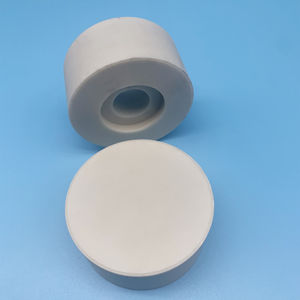
Custom Sheet and Special Shape Aln Aluminum Nitride Ceramic Components Structural Parts
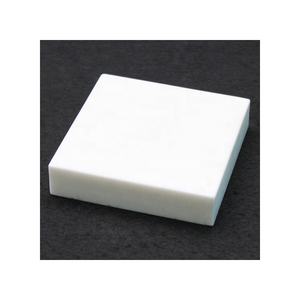
Custom Sheet and Special Shape Aln Aluminum Nitride Ceramic Components Structural Parts
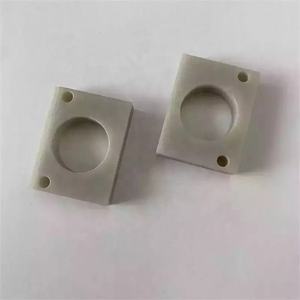
Aluminum Nitride Ceramic Sheet Aluminum Nitride Chip Aluminum Nitride Aln Ceramic Plate
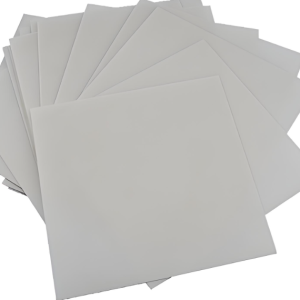
Thermal Conductive Sheet AlN Aluminum Nitride Ceramic Substrate
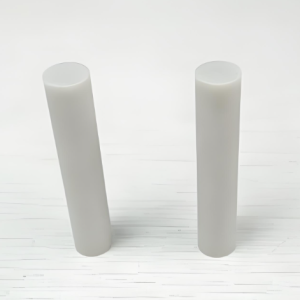
High Precision AlN Bar Aluminum Nitride Ceramic Rod
